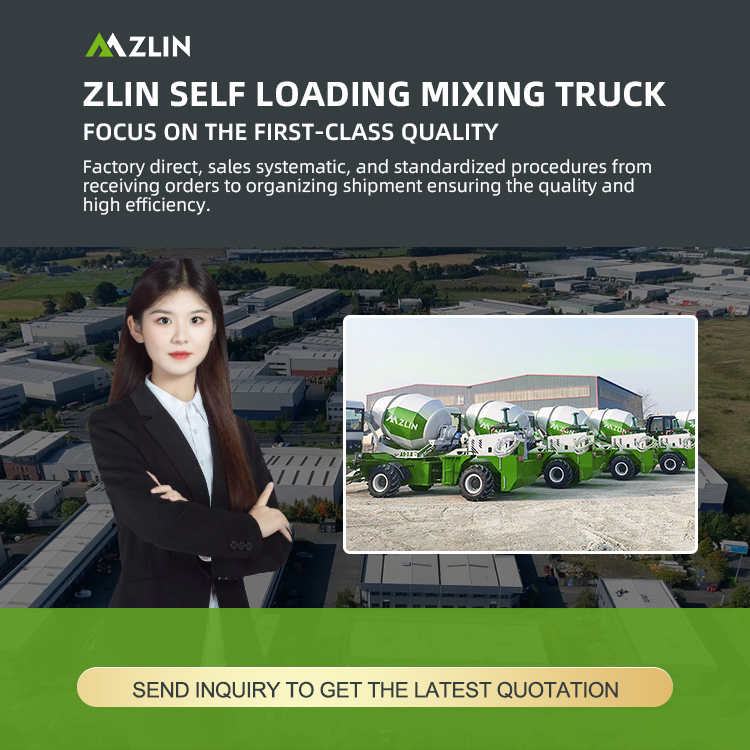1.With three functions of loading, mixing and transporting
Self-loading mixer integrates three kinds of machinery, namely loader, concrete mixer and transportation truck, so it has three functions at the same time, and it can complete the three steps of loading, mixing and transportation by itself, so the working efficiency is much higher than the traditional concrete mixer.
2. Stable quality of mixed cement
Because of the high degree of automation of the self-feeding mixer truck, the standard of the mixed cement can be guaranteed and the stability is better.
3. Applicable to many occasions
Since the self-feeding mixer truck comes with water tank and water pump, it can pump water wherever there is water, so it can be applied to more occasions.
4. Simple operation and labor saving
Since the self-feeding mixer truck is more automatic, it is easier to operate, usually only two people are needed to work, and others only need to do some auxiliary work, so it saves a lot of manpower

1. The self-loading mixer truck should be parked on a flat ground and the bucket should be placed flat on the ground. When the engine is turned off, it is necessary to repeatedly trigger the working device handle several times to ensure that each hydraulic cylinder is in a pressure-free resting state. If the self-loading mixer truck can only be parked on the ramp, the tires should be firmly padded.
2. Before loading the self-charging mixer, drain the residual water and debris in the mixing tank. Keep rotating during transportation to prevent the concrete from segregating. Before reaching the site and discharging, the mixing tank should be rotated at 14-18 revolutions per minute for 1-2 minutes before reversing and discharging. Before reversing, the mixing tank should be made to stop and not to rotate.
3. If the ambient temperature is higher than 25 degrees Celsius, the duration from loading, transportation to discharging shall not exceed 60 minutes; if the ambient temperature is lower than 25 degrees Celsius, the above time shall not exceed 90 minutes.
4. Immediately after unloading at the construction site, use the hose provided with the self-feeding mixer to rinse the inlet hopper, outlet hopper and discharge chute to remove the sludge and concrete adhering to the body. On the way back to the mixing plant, 150L-200L of water should be injected into the mixing tank to clean the concrete residue bonded to the mixing tank wall and blades.
5. At the end of each day, the driver shall be responsible for filling the mixing tank with water and rotating it at 14-18 revolutions per minute for 5-10 minutes, and then draining the water to ensure the cleanliness of the mixing tank. When cleaning all parts of the mixing tank with high pressure water, please pay attention to avoid the instrument and the joystick and other parts.
6. When removing the concrete residue inside and outside the mixing tank, or when the mechanic enters the tank for maintenance and welding, the engine of the mixer should be turned off and the tank should stop rotating completely. When the mechanic enters the mixing tank, the tank must be well ventilated and free from combustible gases and harmful dust. When using power tools in the mixing tank, the operator needs to have good insulation protection.
7. When the self-feeding mixer is working, it is forbidden to put hands into the rotating mixing tank, and it is forbidden to put hands into the connection part of the main discharge chute and the extended discharge chute to avoid accidents.
The above is the explanation of the relevant contents from six aspects of the maintenance cycle of the self-feeding mixer. If you have any doubts or needs about this, please come to our website at any time Consult!